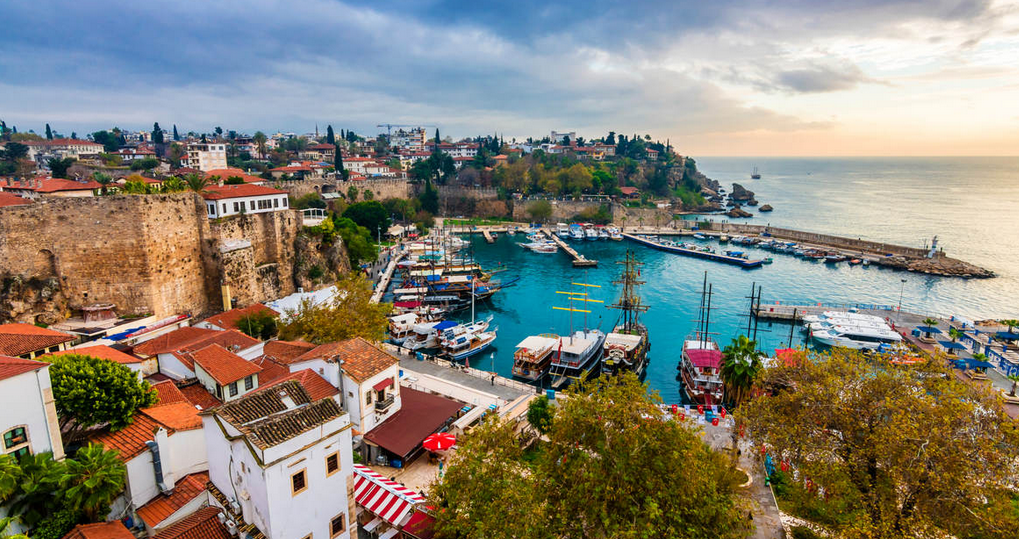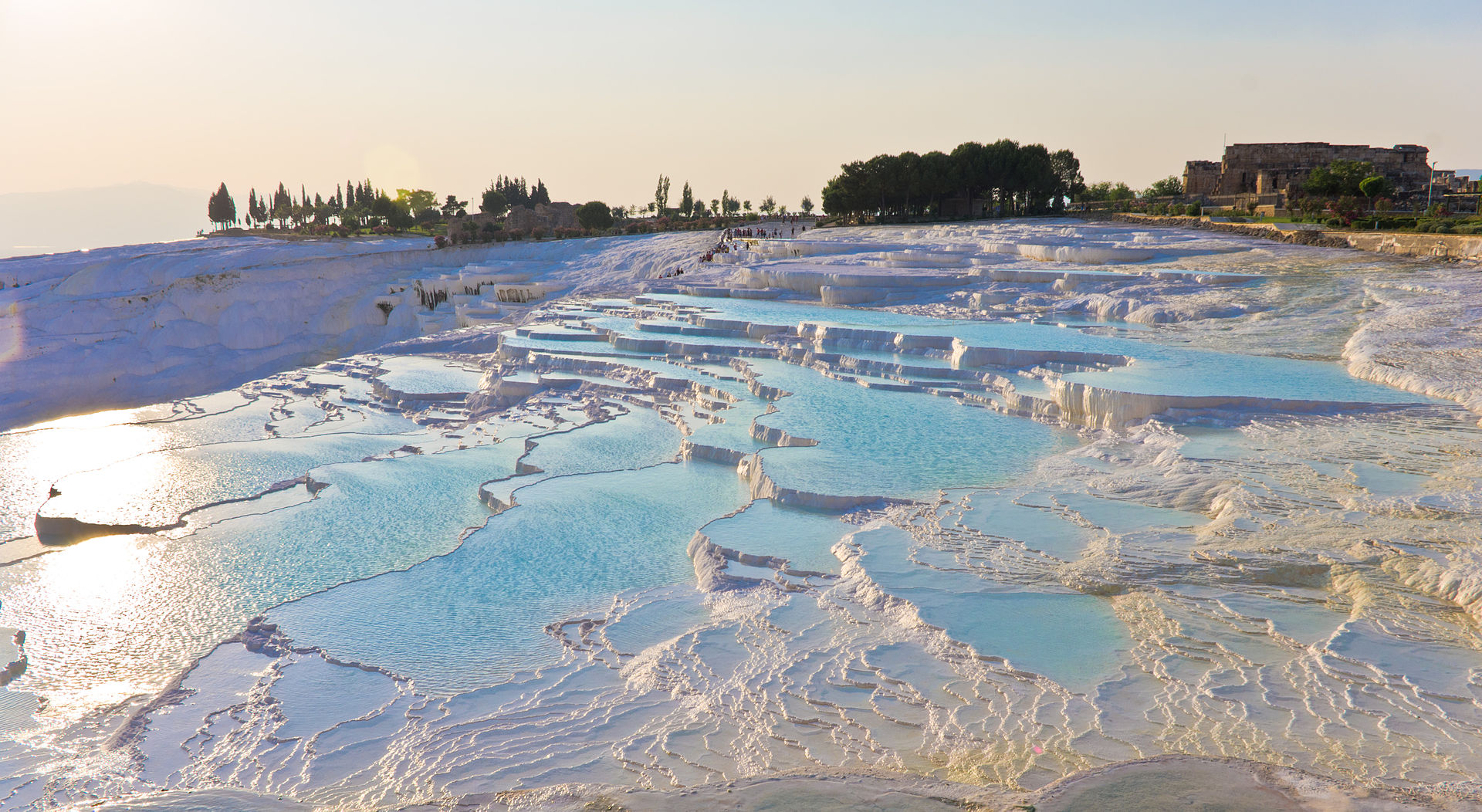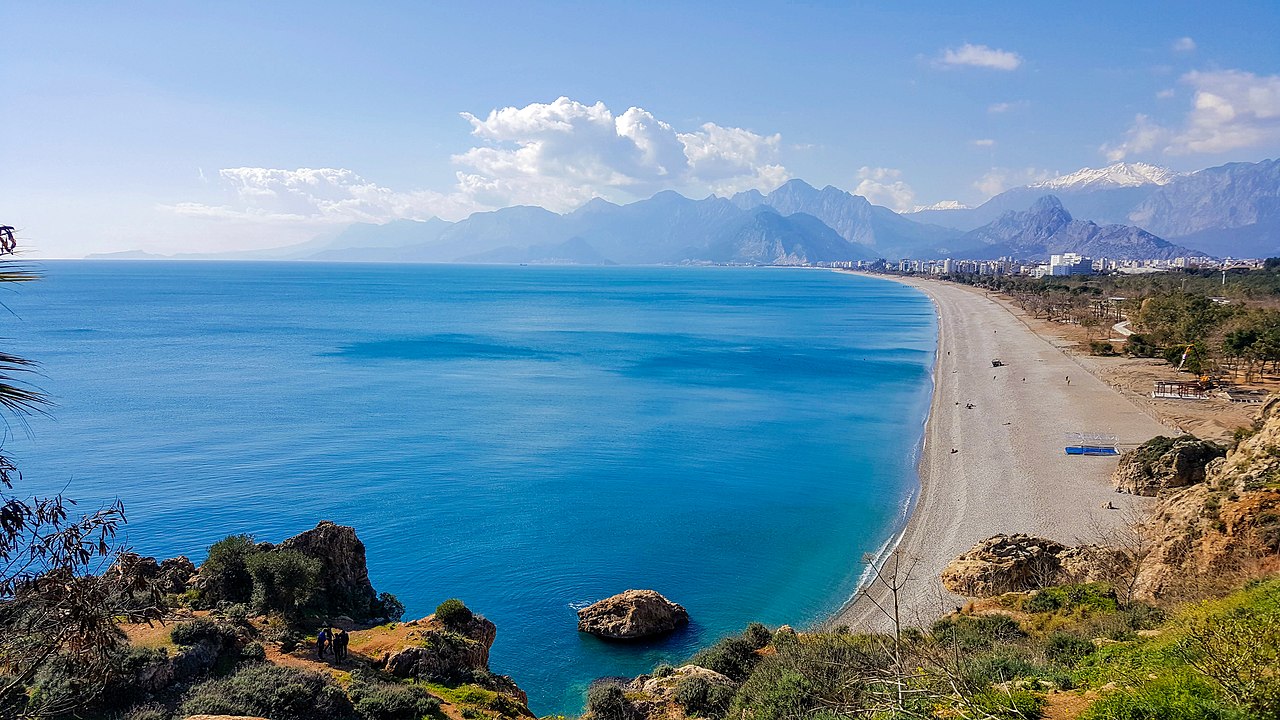
Climate:
The climate in Turkey has a vast diversity with respect to the diverse topography and lat..
Aegean and Mediterranean coast areas enjoy the typical Mediterranean climate. There is hardly a drop of rain during the sun-drenched and hot summer (May to October). Winters are mild and rainy during these regions, and it in rare cases snows at coastal areas, with the exception of tremendous mountain areas more than 2000 metre distances of these regions, which are extremely snowy and are frequently not passable. Water temperature in the Aegean and Mediterranean Seas is warm during the long summer months (May to October) which constitutes the going swimming season and fluctuates between 23? and 28? C from north to southwest.

Areas around the Marmara Sea , has a transitional environment between an oceanic weather and a semi-Mediterranean weather, but it can do rain, although not a lot, during the very warm summertime (as showers which are likely to last for 15-30 minutes). Its winters are colder than patients of the western and lower coasts. Snow frequently occurs at coastal areas, though it will not stay on the earth for long and is limited to only some times every winter. This particular temp in the Sea of Marmara is also frigid than the Aegean and Mediterranean Seas, with this particular temperature reaching only between 20? and 24? C during the summer (June, July and August) and the swimming season is restricted to the people summer weeks.
The Black Sea region has an oceanic environment (thanks to the protecting shield effect of Caucasus mountains) with the best amount of precipitation and is the only region of Turkey that will get high precipitation throughout the year. The eastern part of that coast takes up 2, 500 millimeters every year which is the best anticipation in the country. High seasons are warm and damp as the winters are cool and damp. Snow is common at coastal areas, although it doesn’t stay on the ground for long and is limited to only a few days every winter, though mountains are incredibly snowy as it is likely to be and are frequently not passable, there are snow around the year in the best zones. The drinking water temperature in all of Turkish Black Sea seacoast is always cool and fluctuates between 10? and 20? C throughout the year, and is even less ideal for swimming throughout the summer than in the Sea of Marmara.
Just about all of the coastal areas have a high level of relative humidity during almost all of 12 months which makes hot weather feel sexier and cold weather feel colder than it actually is.
Interior areas like Ankara, generally have hot summers (though the evenings are cool enough to make someone who has on only a slim t-shirt uncomfortable outdoors) and cold and snowy winter seasons. The more easterly the location is, the frigid the winters are and the heavier the snow is. The northeastern part (around Erzurum and Kars) is the only away from the coast area which has cool and rainy summers.
The southeastern region close to the Syrian border has a desert-like climate, temperature is frequently above 40? C during summers with no rainfall. Snowfall is occasional in the winter.






